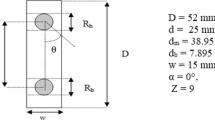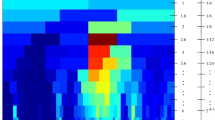Abstract
The benefits of digital twins and accurate near real-time on-site condition monitoring of heavy machinery or load-bearing structures are undeniable. Both demand computationally light and accurate models based on continuously measured data. Extreme Learning Machine (ELM) algorithm provides the means for building accurate and fast predicting classification models. Therefore, the feasibility of the ELM algorithm for building models for near real-time operational state recognition of a rotating machine was studied. Three different models, called one, two, and six cycles, built using the ELM algorithm were compared with corresponding models trained using Support Vector Machine (SVM) and linear regression (LR) algorithms based on their accuracy and prediction times. The comparisons show that the SVM algorithm produces the best accuracy, but with the cost of high prediction times. The LR models have the lowest prediction time. In contrast, the ELM model for the two cycles presents better performance than the corresponding LR and SVM models when the combination of accuracy and the prediction time is considered. The great benefit of the ELM method comes from its mathematical properties: new data can be added to the ELM model without the need to retrain the whole model, and the model is competent to take strong nonlinearities into account. Thus, the possibilities of the ELM algorithm to act as a novelty detector in operational state recognition shall be investigated.
Access this chapter
Tax calculation will be finalised at checkout
Purchases are for personal use only
Similar content being viewed by others
References
Akusok, A., Espinosa Leal, L., Björk, K.M., Lendasse, A.: Scikit-elm: an extreme learning machine toolbox for dynamic and scalable learning. In: International Conference on Extreme Learning Machine, pp. 69–78. Springer (2019)
Den Hartog, J.: Mechanical Vibrations. Dover Publications, New York, United States (1985)
Espinosa-Leal, L., Akusok, A., Lendasse, A., Björk, K.M.: Extreme learning machines for signature verification. In: International Conference on Extreme Learning Machine, pp. 31–40. Springer (2019)
Grieves, M., Vickers, J.: Digital Twin: Mitigating Unpredictable, Undesirable Emergent Behavior in Complex Systems, pp. 85–113. Springer International Publishing (2017)
Huang, G., Huang, G.B., Song, S., You, K.: Trends in extreme learning machines: a review. Neural Networks 61, 32–48 (2015)
Huang, G.B., Wang, D.H., Lan, Y.: Extreme learning machines: a survey. Int. J. Mach. Learn. Cybern. 2(2), 107–122 (2011)
Junttila, J.: Operational state recognition of a rotating machine based on measured mechanical vibration data. Master’s thesis, Arcada University of Applied Sciences (2021)
Liu, X., Gao, C., Li, P.: A comparative analysis of support vector machines and extreme learning machines. Neural Networks 33, 58–66 (2012)
Nussbaumer, H.J.: The fast fourier transform. In: Fast Fourier Transform and Convolution Algorithms, pp. 80–111. Springer (1981)
Pedregosa, F., Varoquaux, G., Gramfort, A., Michel, V., Thirion, B., Grisel, O., Blondel, M., Prettenhofer, P., Weiss, R., Dubourg, V., Vanderplas, J., Passos, A., Cournapeau, D., Brucher, M., Perrot, M., Duchesnay, E.: Scikit-learn: machine learning in python. J. Mach. Learn. Res. 12, 2825–2830 (2011)
Porter, F.P.: Harmonic coefficients of engine torque curves. J. Appl. Mech. 10(1), A33–A48 (1943)
Shafique, M., Theocharides, T., Bouganis, C.S., Hanif, M.A., Khalid, F., Hafız, R., Rehman, S.: An overview of next-generation architectures for machine learning: roadmap, opportunities and challenges in the IoT era. In: 2018 Design, Automation & Test in Europe Conference & Exhibition (DATE), pp. 827–832. IEEE (2018)
Van Basshuysen, R., Schäfer, F.: Internal Combustion Engine Handbook—Basics, Components, System, and Perspectives, 2nd edn. SAE International (2016)
Acknowledgments
The authors wish to acknowledge CSC – IT Center for Science, Finland, for computational resources.
Author information
Authors and Affiliations
Corresponding author
Editor information
Editors and Affiliations
Rights and permissions
Copyright information
© 2023 The Author(s), under exclusive license to Springer Nature Switzerland AG
About this paper
Cite this paper
Junttila, J., Lämsä, V.S., Espinosa-Leal, L. (2023). Extreme Learning Machine-Based Operational State Recognition: A Feasibility Study with Mechanical Vibration Data. In: Björk, KM. (eds) Proceedings of ELM 2021. ELM 2021. Proceedings in Adaptation, Learning and Optimization, vol 16. Springer, Cham. https://doi.org/10.1007/978-3-031-21678-7_11
Download citation
DOI: https://doi.org/10.1007/978-3-031-21678-7_11
Published:
Publisher Name: Springer, Cham
Print ISBN: 978-3-031-21677-0
Online ISBN: 978-3-031-21678-7
eBook Packages: Intelligent Technologies and RoboticsIntelligent Technologies and Robotics (R0)




